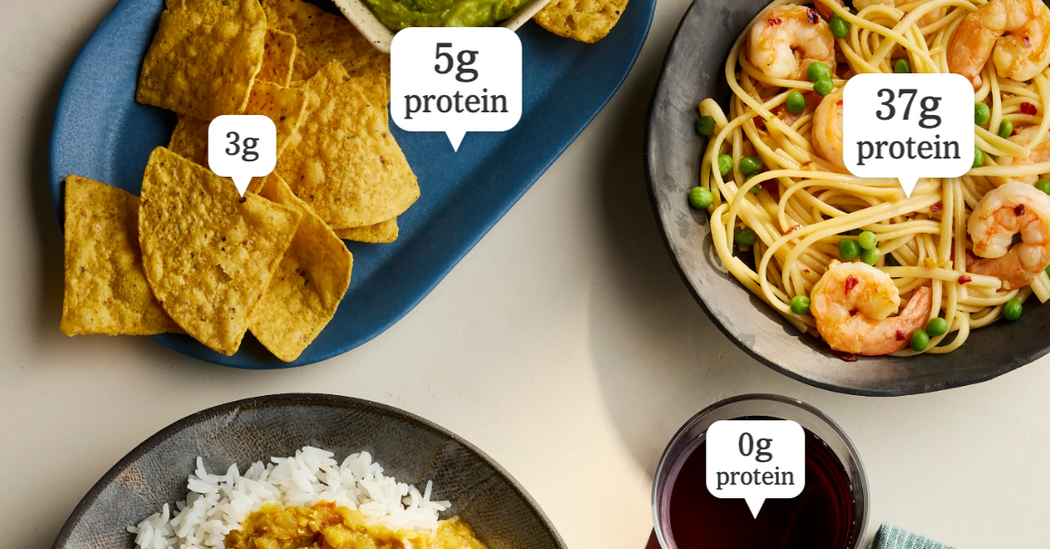With so much attention on protein lately, you might wonder if you’re getting enough. Grocery store shelves are lined with protein-fortified breakfast cereals and snack foods, and cottage cheese concoctions and whey smoothies are all over social media.
But how much protein does your body actually need? And are you hitting that target? Let us help you find out.
How much protein do you need?
First, let’s calculate the minimum amount of protein you — or someone you know — should eat based on federal recommendations.
Do you need more?
The federal recommendation is an estimate of how much your body needs for its basic functions, but some people may require more.
If you’re strength training, for instance, consuming more protein can help you build muscle. And if you’re restricting calories, following a higher protein diet may help keep you satiated and blunt muscle loss. People who were recently hospitalized, or who are recovering from surgery or a serious injury, may also benefit from eating more.
There are no strict rules for how much protein people in these scenarios should eat, but most research suggests that consuming about 1.5 to two times the federal recommendation is plenty.
How do common meals stack up?
Let’s see how much protein you might get from typical foods throughout the day.
Breakfast
Research suggests that people in the United States tend to skimp on protein at breakfast — and sometimes skip the meal altogether. But that’s a missed opportunity, experts say.
Nutrition experts generally recommend getting protein from whole, unprocessed sources like beans, poultry, fish, yogurt, eggs and nuts. Protein bars and powders can contain some sweeteners and additives that have been linked to poor health.
That said, a protein powder with few added ingredients can be useful for some people, like older adults, who may struggle to eat enough protein.
Lunch
You don’t need to hit a specific protein target at every meal. More important is that you get enough overall — and lunch is a chance to move closer toward that goal.
About two-thirds of the protein the average adult in the United States consumes comes from animal sources, and one-third comes from plants. But research suggests that for most people, shifting toward a plant-forward diet — with more legumes, nuts, seeds and whole grains — can lower the risk of certain issues like Type 2 diabetes, cardiovascular disease and earlier death.
That said, chicken, fish, eggs, yogurt and other animal products can be valuable sources of protein, especially for people who struggle to consume enough. And they can provide important nutrients like iron, calcium and B and D vitamins.
Dinner
The average adult in the United States consumes about 40 percent of their protein at dinner. Many experts say we’d be better off eating more protein at breakfast and lunch, so that it keeps us feeling full, and so our bodies can use it throughout the day. But if you haven’t had much protein by dinnertime, this is your opportunity to hit your target.
Is it possible to eat too much protein? Yes, experts say. While most people can safely consume much more than the federal recommendation — up to 35 percent of their daily calories, or 175 grams of protein if they eat 2,000 calories per day — ramping up your protein can come with downsides.
People who consume a lot of protein also tend to eat many animal products, especially red and processed meats, which are linked to greater risks of chronic disease.
And people with kidney disease should avoid eating more protein without discussing it with their doctor. Too much protein can strain the kidneys and potentially worsen their condition.
Most people, however, don’t need to obsess over protein. If you follow a balanced diet, you will likely get more than enough to meet your needs without going overboard.






